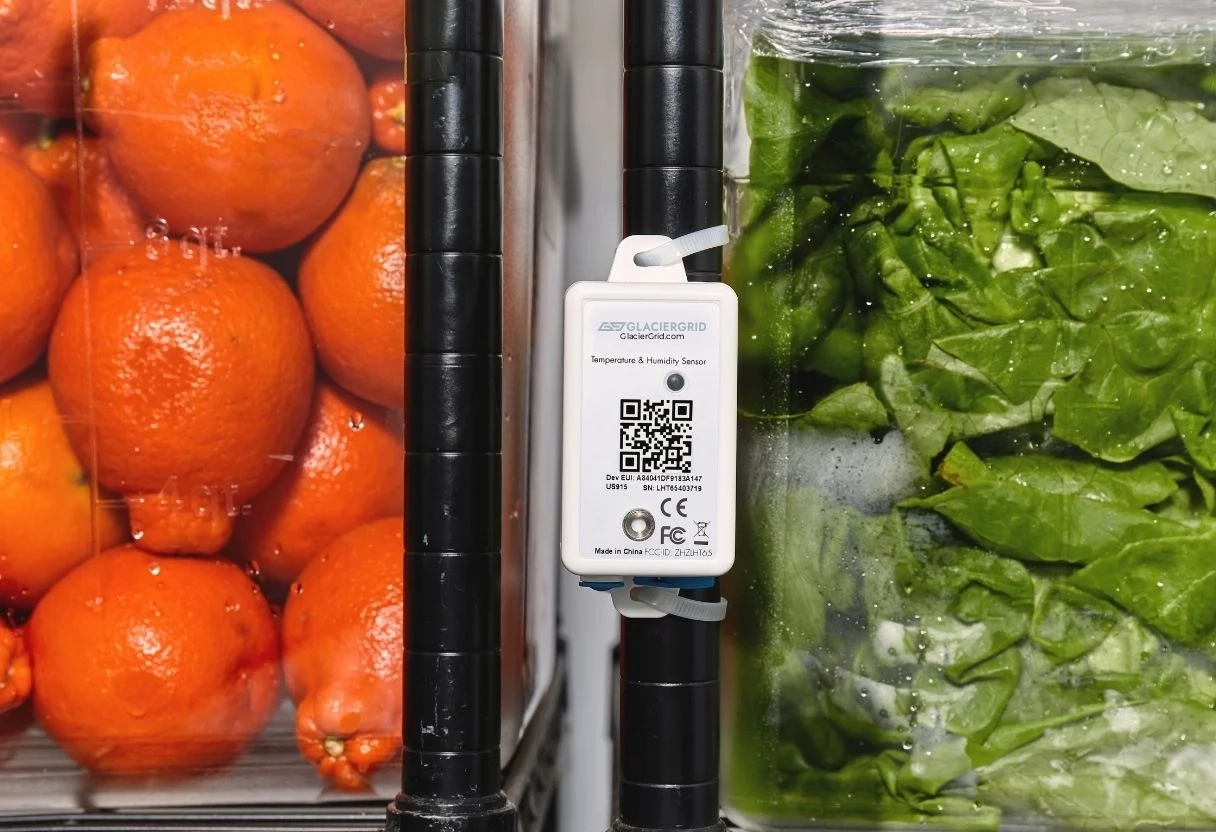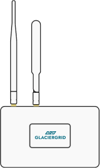Cut Costs with Refrigeration Monitoring and Real-time Notifications

Learn about our commercial refrigeration monitoring solutions for improved food safety in coolers, freezers, and other walk-in cold storage systems.
Back in 2022, the cold chain reached an estimated $233.2 billion. And from 2023 to 2030, the cold chain market is expected to continue growing at an estimated rate of 18.6%. Based on this, it looks like the demand and corresponding value of the cold chain may grow astronomically in the next decade.
However, there's a weak link in the cold chain. While many industries rely on cold storage, there is a notable lack of adequate monitoring for their equipment and inventory. This is exceptionally true in industries responsible for the storage of perishable food items, such as:
- Restaurants
- Convenience stores
- Hospitality
- Hospitals
- Assisted living facilities
- Cold storage warehouses
While some rely on traditional thermometers, others don’t have reliable and accurate means to monitor their equipment and inventory at all.
It’s time for a refrigeration revolution
Throughout human development, the world economy relied on various technological innovations that increased the production of goods and jump-started the modern economy. In time, these industrialized processes led to a near-perpetual upward trajectory in the quality of life of people around the globe.
Today, one of the most vital of these is the commercial and industrial refrigeration system used to transport products worldwide. However, there’s a catch.
Whether it be freezers, walk-in industrial refrigeration, the lowboy in your local diner, or the everyday display freezer in your nearest convenience store—the lack of effective monitoring leads to expensive product spoilage and inventory loss.
While some perceive these risks as the cost of doing business, they are a real risk to the survival of their operation. To match the demand for and growth of the cold chain, remote monitoring technology, such as GlacierGrid, is quickly becoming a solution to this growing problem.
With real-time data and analytics, automated reporting and alerting, and complete integration into the Internet of Things (IoT), GlacierGrid is poised to become a vital part of the smart cold chain of the future.
Here’s how GlacierGrid gives clearer surveillance over your cold storage operations
Around-the-clock monitoring
One of the essential features of GlacierGrid’s refrigeration monitoring system is that it allows you to monitor the temperature of your business’ cold storage 24/7. GlacierGrid° accomplishes this with its three main components:
-
Temperature sensor
GlacierGrid’s wireless sensors are dual-use and perform as both a temperature sensor and a humidity sensor. By giving you the ability to monitor both factors in real-time, your operators can detect when your perishable inventory is entering the “spoilage zone.”
Food-centered industries refer to these conditions as the food safety danger zone. The danger zone is typically found in the temperature range between 40°F and 140°F, where microorganisms that cause spoilage flourish.
Humidity also further promotes the growth of microorganisms. So, a robust food safety food-safety monitoring solution should include features that can accurately detect and measure these conditions.
GlacierGrid’s sensors measure temperature and humidity every ten minutes and transmit that data to a centralized router, or hub, via long-range radio (LoRaWAN). Using LoRaWAN to link the sensor and hub has unique advantages over WiFi or Bluetooth.
LoRaWAN can transmit data even through metal-plated and concrete walls that often make up the infrastructure of restaurants and warehouses—ensuring you get important information and updates on your cold storage readings.
-
Hub
The hub processes the temperature and humidity data sent by the sensor. It enters the cloud through cellular signals, making it a reliable option almost anywhere—even in places with weak internet access.
-
Software suite
GlacierGrid’s software suite accesses the data stored in the cloud, which it can access via our mobile app or web dashboard. GlacierGrid’s mobile app is available for both Apple and Android devices. However, you can only access the dashboard via an internet browser.
So, with 24/7 monitoring, GlacierGrid technology can help you better react to critical scenarios that would otherwise spell disaster for your perishable inventory. These scenarios would include:
- Power outages
In locations where extreme weather conditions occur frequently, refrigeration monitoring indicates when and for how long your equipment and inventory have been out of the food safety threshold
From there, you can make accurate decisions on whether or not to discard inventory that’s been out of the threshold for too long.
- Equipment malfunctions
As crucial as commercial refrigeration is, it’s still prone to breakdowns and malfunctions. However, coolers generally don’t break down randomly.
A breakdown is often followed by a gradual inability to maintain consistent temperature—leading to a slow warming trend. Fortunately, this is something you can predict using our device’s wireless sensor data.
Using this information, you can call upon maintenance teams before a breakdown occurs—helping you reduce downtime, limit the price of repairs, and prevent inventory loss.
- Human error
Businesses that don’t use wireless refrigeration monitoring often use manual temperature monitoring. However, during busy operating hours, your team might not notice temperature excursions or conduct their audit accurately.
GlacierGrid performs temperature checks accurately and automatically, giving you and your employees one less thing to worry about.
Real-time alerts and reports
While the ability to monitor temperature and humidity at a glance is crucial, that alone provides you with only a piece of the refrigeration monitoring puzzle. To take full control of your equipment in both the short and long term, you make use of our software suite.
You can use GlacierGrid’s mobile app for temperature monitoring on the go. The app can help you:
- Quickly install sensors
- Conveniently and easily invite users
- Set and receive instant email, text message, or phone call alerts
GlacierGrid’s alerts help you take a more preemptive approach to preventing perishable inventory loss.
Here’s a scenario example: When you receive an alert, you can relocate your inventory to alternate storage on or offsite before it spoils. During this time, you can call up maintenance personnel to fix your equipment before it totally breaks down.
Acting quickly is crucial—complete equipment breakdowns take significantly more time than minor component fixes. Such equipment downtimes can incur additional costs to your business, especially since food service operations can’t function without working refrigeration and safely stored inventory.
In addition, our web dashboard includes more detailed analytics and it serves as the primary method for logging data and producing verified reports. All of which can help you comply with local health inspectors and national safety protocols such as HACCP.
Ultimately, using GlacierGrid can reduce some of the 28-35% of your annual revenue wasted by inventory loss.
At $12.50 per sensor per month, GlacierGrid is a highly cost-effective way to put $15,000 back in your pocket every year
Cut your costs without cutting corners—try GlacierGrid today!







